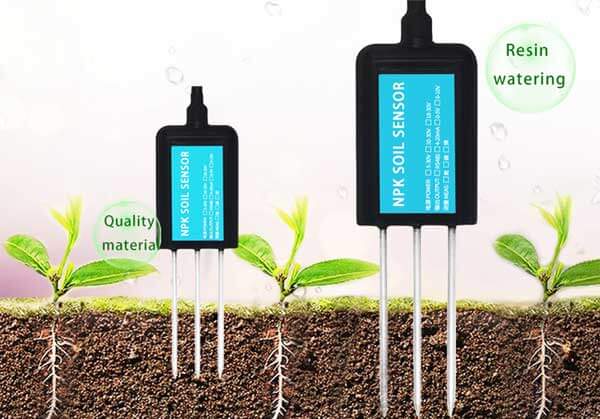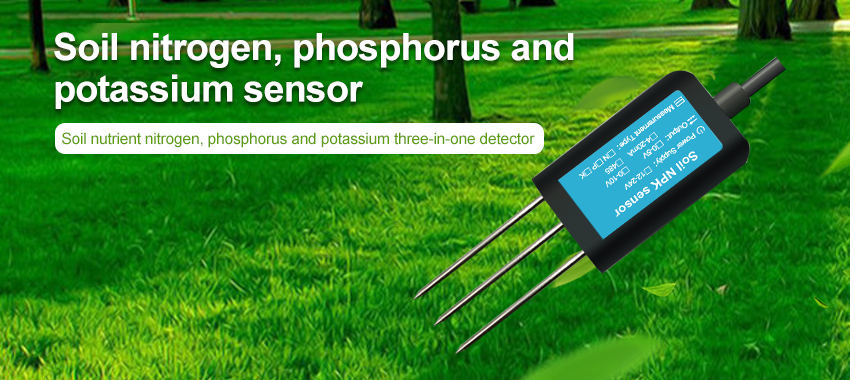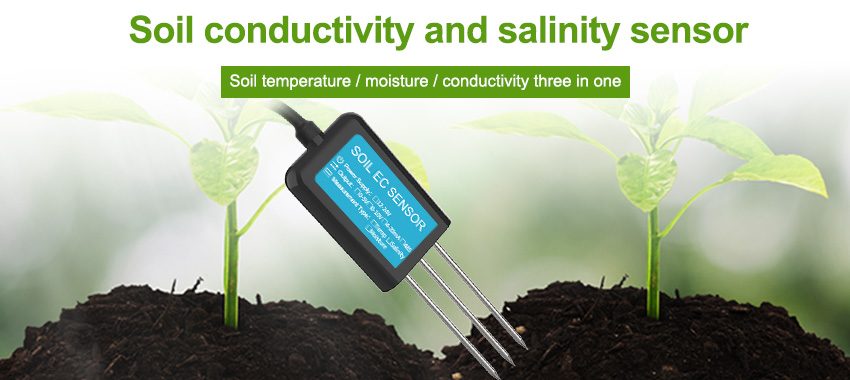Agriculture plays a crucial role in feeding the growing global population. As the demand for food increases, farmers face the challenge of maximizing crop yields while minimizing resource usage and environmental impact. One key factor in achieving sustainable agriculture is understanding and managing soil health. Soil sensors are emerging as a powerful tool to enhance agricultural practices by providing real-time data on soil conditions. This article explores the significance of soil sensors in unlocking crop potential, discusses the innovative technologies driving this transformation, and highlights the benefits of adopting these systems for improved productivity and sustainability.

The Importance of Soil Health:
Soil health is a critical factor in crop growth and productivity. Healthy soils provide essential nutrients, water retention, and a favorable environment for root development. However, soil quality can vary significantly within and across fields, influenced by factors like nutrient levels, pH, moisture content, and compaction. Understanding these variations and addressing soil health issues is essential for optimizing crop growth, reducing resource waste, and preserving the environment.
Traditional Challenges in Soil Monitoring:
Traditional methods of soil monitoring, such as manual sampling and laboratory analysis, are time-consuming, labor-intensive, and provide limited spatial and temporal information. These methods often involve collecting samples from a few representative locations and waiting for days or weeks to receive results. Consequently, farmers may miss critical information about soil conditions, leading to suboptimal decision-making and reduced crop yields. Additionally, traditional monitoring approaches lack real-time data, making it challenging to respond promptly to changing soil conditions.
Innovative Soil Sensor Technologies:
a. Moisture Sensors: Soil moisture sensors measure the water content in the soil, providing real-time information on soil hydration levels. By monitoring soil moisture, farmers can optimize irrigation practices, ensuring that crops receive adequate water without overwatering or wasting resources. This technology helps prevent water stress and improves water-use efficiency, leading to healthier crops and higher yields.
b. Nutrient Sensors:
Nutrient sensors measure the concentration of essential nutrients in the soil, such as nitrogen, phosphorus, and potassium. By continuously monitoring nutrient levels, farmers can make informed decisions about fertilizer application, ensuring that crops receive the right amount of nutrients at the right time. This targeted approach minimizes fertilizer waste and reduces the risk of nutrient runoff, which can harm water bodies and ecosystems.
c. pH Sensors:
pH sensors measure the acidity or alkalinity of the soil. Soil pH plays a crucial role in nutrient availability and microbial activity. Different crops have specific pH requirements for optimal growth. By monitoring soil pH, farmers can adjust soil amendments and pH regulators to create an ideal growing environment for their crops. Maintaining proper soil pH promotes nutrient uptake and overall crop health.
d. Temperature Sensors:
Soil temperature sensors measure the temperature at various depths within the soil profile. Soil temperature affects seed germination, root growth, and nutrient availability. By monitoring soil temperature, farmers can make informed decisions about planting times, crop selection, and irrigation scheduling. This technology enables farmers to optimize crop management practices based on real-time temperature data, leading to improved crop performance.
Benefits and Impacts on Agriculture: a. Precision Farming: Soil sensors enable precision agriculture by providing real-time, site-specific data on soil conditions. This allows farmers to tailor their management practices to the specific needs of each field or even individual plants. By optimizing inputs like water, fertilizers, and pesticides, farmers can reduce waste, minimize environmental impact, and improve resource use efficiency.
b. Increased Crop Yields:
By monitoring soil conditions with sensors, farmers can identify and address issues promptly, such as water stress, nutrient deficiencies, or pH imbalances. Timely interventions help maintain optimal growing conditions, leading to healthier plants and increased crop yields. Soil sensors enable farmers to make data-driven decisions, maximizing the potential of their crops.
c. Environmental Sustainability:
Soil sensors contribute to sustainable agriculture by minimizing resource waste and environmental impact. By optimizing irrigation, fertilization, and other inputs, farmers can reduce water usage, fertilizer runoff, and pesticide application. This not only conserves resources but also protects water quality and ecosystems surrounding agricultural areas.
d. Cost Savings:
Soil sensors help farmers optimize resource use, reducing input costs while maximizing crop yields. By avoiding over- or under-application of water, fertilizers, and pesticides, farmers can save money and improve their profitability. Additionally, the ability to detect and address soil health issues early can prevent crop losses and further financial setbacks.
Challenges and Future Directions: While soil sensors have shown great promise in enhancing agriculture, challenges remain in terms of sensor accuracy, scalability, and affordability. Soil conditions can vary widely within a single field, requiring sensors with high spatial resolution. Additionally, sensor calibration, data management, and integration with existing farm management systems are areas that require attention. Future research and development should focus on improving sensor reliability, reducing costs, and developing user-friendly interfaces for data interpretation and decision-making.
Looking ahead, advancements in sensor technology, wireless connectivity, and data analytics will continue to drive innovation in soil monitoring systems. Integration with other agricultural technologies, such as satellite imagery and drones, can further enhance the capabilities of soil sensors. The development of smart farming platforms that integrate multiple data sources will enable farmers to make more informed decisions, optimize resource use, and unlock the full potential of their crops.

Conclusion: Soil sensors are revolutionizing agriculture by providing real-time, accurate, and site-specific information on soil conditions. By monitoring moisture levels, nutrient concentrations, pH, and temperature, these sensors enable farmers to optimize their management practices, increase crop yields, and reduce environmental impact. While challenges exist, ongoing advancements in sensor technology and data analysis techniques will drive further innovation in soil monitoring systems. By adopting these innovative technologies, farmers can unlock the full potential of their crops while promoting sustainability and responsible resource management in agriculture.
